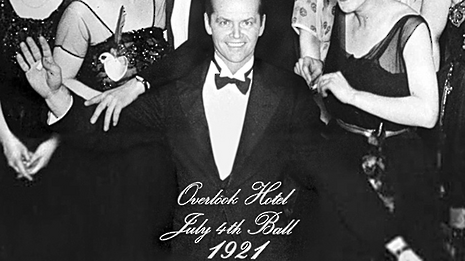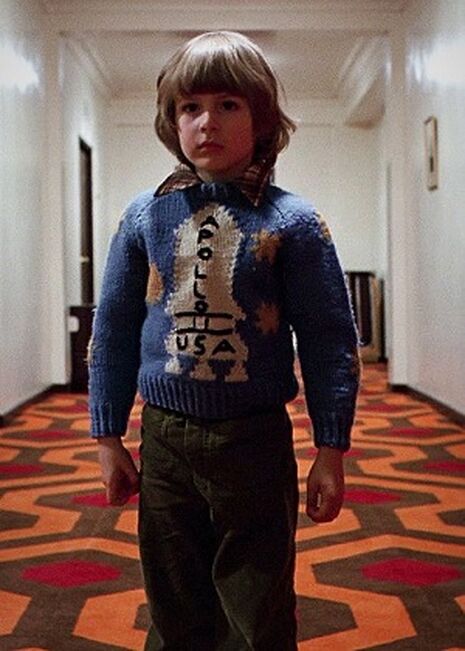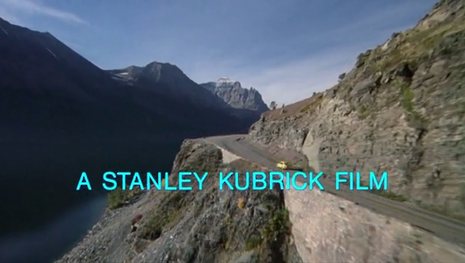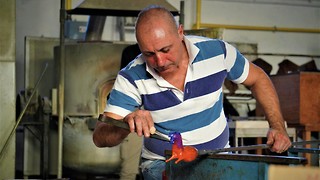Best Horror: ‘The Shining’
Looking to our second category winner, Anna Ellis-Rees reflects on Kubrick’s masterpiece, and how it changed the horror genre forever

When I ask people what they think of Stanley Kubrick’s The Shining, there are generally two types of response. One is that it was “really scary”; the other is that it “wasn’t that scary.” However, as the greatest horror, and arguably one of the greatest films of all time, The Shining cannot simply be placed into these two narrow boxes. In fact, horror is not only about being scared – just as Grady suggests that Jack has “always been the caretaker”, I don’t think I will ever be able to leave the Overlook Hotel.
I first watched The Shining after finishing Stephen King’s original novel, a time when I was beginning to discover a love for horror. At that point, my knowledge of the genre did not extend further than a few Halloween viewings of Friday the 13th and Psycho. I knew that horror could thrill me, excite me, and make me anxious in the dark. I knew that horror could be influential and insightful into society’s darkest secrets. But what I did not know was the necessity of horror-cinema. Not until I saw The Shining.
“Kubrick deliberately crafted a hotel that is so intricately unnatural that the audience are subconsciously manipulated and disorientated.”
When it was released in 1980, The Shining was not valued as the masterpiece that it is today. It was criticised as a poor adaption and injustice to King’s novel, as a film held back by messy direction and unconvincing acting, particularly Shelly Duvall’s portrayal of Wendy. It was ignored by the Academy Awards and highlighted by the Razzies. Roger Ebert and King himself were dismissive. However, it is now widely regarded as one of the greatest works of the genre, a pioneer of Garret Brown’s Steadicam, and an important film by a director that has and will continue to influence countless others.
The role of Kubrick was integral to the transformation of the Overlook Hotel from a creepy house of horrors in King’s novel into a visual nightmare. As a quadruple threat by often playing the part of director, editor, screenwriter and cinematographer, each characteristic of Kubrick’s celebrated idiosyncrasy is connected to each area of strength in The Shining.
The first area worth mentioning is his exploitative approach to the mechanics of cinematography and mise-en-scène. Kubrick’s attention to detail is so extreme that each and every question the film brings up is not the result of the overly-subjective interpretation of the viewer, but is really rooted in Kubrick’s intentional role as cinematic puppet-master over what we see and experience.

This is heavily discussed in the documentary Room 237, a fascinating insight into the endless mysteries within Kubrick’s world. The documentary looks into the architectural impossibility of the Overlook; for instance, the so-called ‘impossible window’ in Stuart Ullman’s office, and Danny’s unfeasible movement from the ground floor to the first floor during the cycling scenes. Rather than accidental misjudgments gone unnoticed, Kubrick deliberately crafted a hotel that is so intricately unnatural that the audience are subconsciously manipulated and disorientated.
Room 237 also looks into several theories surrounding the film’s symbols, from the idea that The Shining is a commentary on the genocide of Native Americans, to the claim that it is evidence for Kubrick contributing to the alleged faking of the Apollo 11 moon landing. Regardless of their likelihood, the endless possible theories and analysis of The Shining in Room 237 and beyond is evidence for the lasting impact the film has had, regarding the potential of what cinema can do.
A second characteristic of Kubrick seen in The Shining is his careful selection and treatment of the cast. An actor frequently assigned to play psychopaths, Jack Nicholson is ideal for the role of Jack Torrance, an aggressive man on the verge of insanity. Whilst Shelley Duvall is often criticised for her melodramatic and misogynistic performance of Wendy, her wide-eyed reactions to the violence of her husband are perhaps even more unnerving than Jack himself.
Both Nicholson and Duvall protested against the lack of credit they received for their performances, but there is no doubt that Kubrick’s relationship with his cast was hugely significant to the final outcome; he exhausted his actors, supposedly feeding Nicholson nothing but cheese sandwiches for days on end, verbally abusing and ignoring Duvall to the point that her hair began to fall out from stress, and filming one close-up shot of Scatman Crothers a record-breaking 148 times. While this approach was certainly cruel, it forced the actors to perform under extreme tension, adding an element of realism to their performances.
“Duvall's wide-eyed reactions to the violence of her husband are perhaps even more unnerving than Jack himself.”
A final Kubrickian element of the film that has made it so chilling is its soundtrack. From Berlioz to Penderecki, Kubrick’s use of classical music rather than original soundtrack makes the music as much of a character as the actors; it has a life of its own rather than solely functioning to accompany the visuals. The mixture of this pre-composed non-diegetic tracks with the repetitive diegetic sounds of actions, such as typing and bike wheels on the polished hotel floor, blend effectively to capture insanity.
Of course, Kubrick’s use of silence is equally prominent; Jack’s conversation with the ghostly bartender Lloyd involves a number of revelations of key parts to the story – the viewer discovers Jack’s history of violence towards Danny and the hint that Jack was always ‘part’ of the hotel. But none of these plot turns are accompanied by dramatic music; instead there is simply eerie dialogue, forcing the viewer to tune into these disturbing words without any distraction of music.

Horror is a tricky genre. With the unfavourable combination of a critically poor reputation and non-mainstream fan base, horror is truly the maverick of cinema. Convincing others of its greatness can be a near-impossible task. Conscientious objectors claim they are too ‘weak’ to sit through a horror film, exclaiming the inevitable insomnia or nausea that will ensue upon viewing. With such protest, horror films are lowered to nothing more than B-movie status, and horror fans to nothing more than heartless sadists.
And yet, horror is arguably one of the most human genres of all. To create true fear is a sign of ingenuity in a director, as it requires a profound insight into the inner mechanism of the human brain and its complex emotions. To paint a picture so frightening that it triggers the very sociopolitical fears that lurk so deep in the depths of our subconscious that we cannot recognise the origin of the fear itself is a stroke of genius. The fact that it is rarely carried out successfully makes me respect the horror genre even more.
“It requires a profound insight into the inner mechanism of the human brain and its complex emotions.”
To create a horror classic is to pinpoint a universal terror that reverberates through generation after generation. But what Kubrick has created is not just simply a horror classic: it is overall a classic cinematic feat. The universal terror that he has generated has been influential to both the art of horror and the art of film.
So what is this terror? This is the question that is so difficult to comprehend. It is a terror of the impossible being possible. The parallel world that Kubrick has created is both ridiculous and natural, a living nightmare where every social and physical law is turned upside down. Anything is feasible within the confines of the Overlook and within the discourse its creation brought along with it.
The idea of something that doesn’t quite work is the core of the inexplicable constant sense of wrong in The Shining. And isn’t this exactly what keeps has kept us awake at night, from bygone generations to this current age of terror and destruction: the unimaginable limits of human nature? For a film to enable its viewers to understand this enigma is the reason why we need stories like The Shining and the horror genre itself. It is so much more than just blood and guts
 Comment / The (Dys)functions of student politics at Cambridge19 January 2026
Comment / The (Dys)functions of student politics at Cambridge19 January 2026 News / Local business in trademark battle with Uni over use of ‘Cambridge’17 January 2026
News / Local business in trademark battle with Uni over use of ‘Cambridge’17 January 2026 Arts / Exploring Cambridge’s modernist architecture20 January 2026
Arts / Exploring Cambridge’s modernist architecture20 January 2026 Features / Exploring Cambridge’s past, present, and future18 January 2026
Features / Exploring Cambridge’s past, present, and future18 January 2026 News / Your Party protesters rally against US action in Venezuela19 January 2026
News / Your Party protesters rally against US action in Venezuela19 January 2026







